Beverly Gray's Blog: Beverly in Movieland, page 111
April 3, 2015
Roger Corman Hammers Out a Career
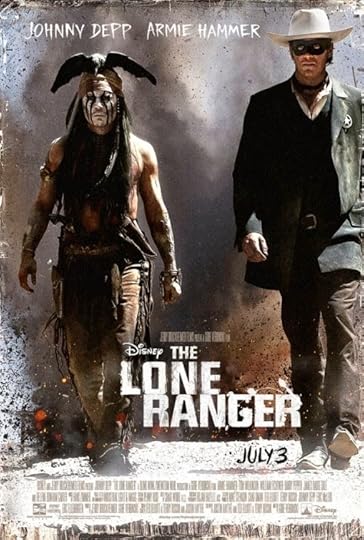
April 5 is a special day in the film world: the 89thbirthday of B-movie maven Roger Corman. Roger is my former boss, as well as the subject of my best-selling independent biography, Roger Corman: Blood-Sucking Vampires, Flesh-Eating Cockroaches, and Driller Killers , now in its third edition. Unquestionably Roger has lived long and prospered. This year, though, his birthday celebration may be marred by a messy financial matter. He and wife Julie have just filed a lawsuit, claiming they’ve lost $60 million because of a hedge fund manager’s incompetence.
I just finished reading veteran journalist Steve Weinberg’s fascinating 1989 biography of tycoon-diplomat Armand Hammer. A powerful figure on the world stage, Hammer seemed capable of living forever. (When hauled into court in 1976, charged with a Watergate-era illegal campaign contribution, he looked to be at death’s door. The judge let the sick old man off easy, and he lived to be 92, finally passing away in 1990.) What I’ve gleaned from Weinberg’s pages is how many personality traits Hammer and Corman share. They could almost be twins, separated at birth.
In one regard Hammer had Roger beat. Roger’s considerable accomplishments are all within the entertainment field. He’s told a colleague of mine, “I never want to see another movie. But it’s the only thing I know how to do.” Hammer, by contrast, seemed to succeed at whatever he chose. As an American capitalist in the early days of the Soviet Union, he made money in phosphate, and in the manufacture of pencils. Later he sold art and liquor, then discovered the oil business, founding Occidental Petroleum. Ultimately he became so rich that he could indulge in whims like cattle-breeding and Arabian horses. He even bought the Arm and Hammer Baking Soda Company, so that the Wall Street Journal could jest, “Armand Hammer and Arm and Hammer Finally Arm in Arm.”
It sounds like Roger to me when Weinberg says, “For Hammer . . . wealth and adulation seemed to substitute for friendship.” The hirings and firings that went on within Hammer’s innner circle seem familiar too: in Corman’s world I’ve also seen protégés suddenly banished, and heirs apparent announced one day, then demoted the next. Roger has no board of directors whom he needs to keep in line by requiring that they all file unsigned letters of resignation. But there’s no question that Roger, like Hammer, can be intimidating to underlings. When Michael Amato was head of marketing at Roger’s Concorde-New Horizons, he was too much in awe of his boss to disagree about anything significant. Whenever business problems arose, Amato would march into Corman’s office, intent on expressing his views. But inevitably he would be won over to Corman’s own perspective. So the meeting would end with his complete capitulation: “Whatever you say. I’ll work all night on this, get it done for tomorrow.”
A man who loved publicity, Hammer commissioned over the course of his lifetime four flattering books about himself. Predictably, he ignored Weinberg’s request that he cooperate on a wholly objective account of his long, eventful career. Roger has published his own ghost-written autobiography, and I know from experience that he encourages outside writers to chronicle his life only when he’s allowed to pass judgment on everything that’s said about him. If he doesn’t get final cut, watch out!
Inevitably Hammer too aspired to move into the movie biz. But his documentaries, like 1984’s Backstage at the Kirov, can hardly compete with Roger’s Poe cycle. Still, Hollywood is not without a Hammer: his great-grandson Armie is now accumulating an impressive list of leading-man credits.
Happy birthday, Roger! And many happy returns. . . .
Biographer and journalist Steve Weinberg will appear on a panel I’m moderating, “The Biographer’s Voice,” at the sixth annual conference of BIO, the Biographers International Organization. It takes place on June 6, 2015, in Washington, D.C. The public is most welcome!
Published on April 03, 2015 12:01
March 31, 2015
"Wild Tales": Flying the Unfriendly Skies
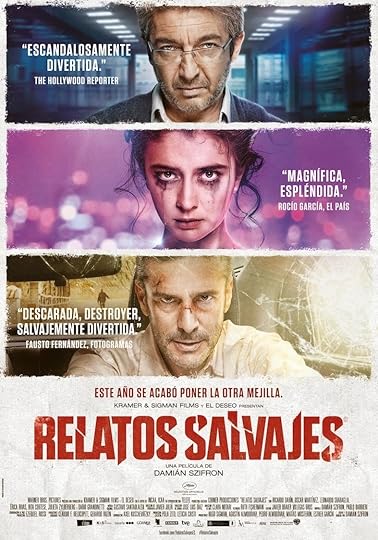
There can’t be anyone who hasn’t heard by now the story of Andreas Lubitz. He was, of course, the Germanwings co-pilot who seems to have deliberately slammed a plane carrying 150 people into a mountain peak in the French Alps. The possibility of a suicidal maniac at the controls is just one more reason for all of us to shudder when thinking about our next trip into the “friendly skies.” But I didn’t expect the full horror of the situation to hit me at my local movie house.
Last weekend I finally caught up with Wild Tales (or Relatos Selvajes) the darkly comic film from Argentina that was nominated for the 2015 Best Foreign-Language Film Oscar. Written and directed by Damián Szifrón, and produced by Spain’s Pedro Almodóvar, Wild Tales is a morbid but hilarious exploration of people behaving badly. This anthology film brings together six short vignettes united by the theme of revenge. Here the grotesque is the norm: death by rat poison, death by butcher knife, grim encounters with a hammer and an oversized mirror. One segment, “El Más Fuerte,” is a rapidly escalating tale about the consequences of road rage. Another, which translates as “Till Death Do Us Part,” kicks off with a joyous wedding reception, then introduces jealousy, sex, an orgy of destruction, and a blood-stained bridal gown. The stories are carefully crafted, and the ending of each is rarely predictable. (In one case a vengeful explosion turns a sad-sack into a local hero.) Basically, though, it’s hard to tell which comes off worse: Argentina’s tangled government bureaucracy or basic human nature.
The opening segment, called simply “Pasternak,” is the one that took my breath away. It starts out with an attractive young woman, a fashion model, showing up for an airline flight. Once aloft, she discovers that each and every one of her fellow passengers has some sort of long-ago connection with her former boyfriend, a fellow named Gabriel Pasternak. There’s a music critic who barred his way into a conservatory, a teacher who labeled him hopeless, a shrink who failed to help him solve his problems, a best friend who let him down . . . . And guess who turns out to be the purser on the flight, the one who’s just barricaded himself in the cockpit? There’s a final twist that I won’t spoil: it’s simultaneously delicious and horrible. Yes, life sometimes imitates art, but this coincidental overlapping of screenplay and current events was (not just for me, I’m certain) a bit too close for comfort.
But leave it to the Argentineans to look at the world through a glass, darkly. (I guess the cynical Argentine approach to life reflects a bizarre national history that includes, among other oddities, the eccentric regime of Juan and Evita Perón.) When I was Roger Corman’s story editor at Concorde-New Horizons, I was privileged to work with Héctor Olivera, best known for a sardonic 1983 political film, Funny Dirty Little War, that won international prizes. Though Héctor, a courtly white-haired gentleman, was a respected filmmaker in his own country, he seemed happy enough to direct Concorde schlock like Barbarian Queen and Wizards of the Lost Kingdom. We’d come up with the scripts, send a few leading actors down Argentine way, and let Héctor do the rest. I worked directly with him on Two to Tango, an English-language version of an Argentine hit-man thriller, and on Play Murder for Me. (Yes, I have credits on both films.)
Muchas gracias to Argentine journalist (and Facebook buddy) Andrés Fevrier for reminding me of those wild and crazy days.
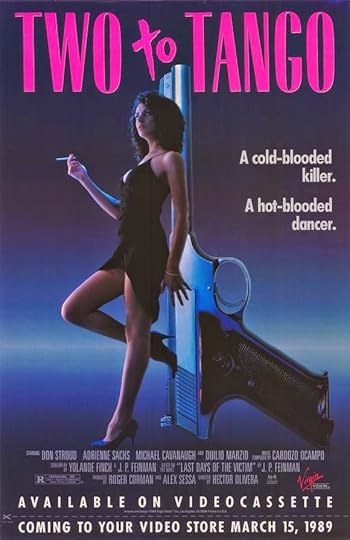
Published on March 31, 2015 18:25
March 27, 2015
Christopher Plummer Makes an Impression

Today the fiftieth-anniversary celebration of The Sound of Music will bring Captain Von Trapp to his knees. As part of the festivities, Christopher Plummer has been invited to leave his handprints in the forecourt of Hollywood’s famous Chinese Theatre. And he’s tickled pink about the honor.
I’ve been a bit in love with Christopher Plummer since long before I ever saw him perform. As a stage-struck kid in SoCal, I read plays and kept up with Broadway news. Several of the shows in which Plummer starred were so entrancing on the page that I knew he must have been wonderful. My tastes were rather literary, and I loved J.B., a verse drama by the poet Archibald MacLeish that used a circus tent as a setting for a stylized rendition of the Biblical story of Job. Under Elia Kazan’s direction, Pat Hingle played an Everyman figure caught in the middle of a tussle between a God-like Raymond Massey and a Satanic Plummer. Of course it was the dark role played by Plummer that captured my imagination. In the following decade, he took on another near-demonic figure in Peter Shaffer’s The Royal Hunt for the Sun. This time he was the ruthless conquistadorFrancisco Pizarro, butting heads with the noble and doomed Incan lord Atahualpa (played in a loincloth by, of all people, David Carradine!)
I never saw Plummer perform the great Shakespearean roles: Iago (opposite James Earl Jones), Macbeth, King Lear. I was, however, dazzled by his portrayal of the swashbuckling Cyrano de Bergerac, in a version of Rostand’s play televised in 1962 on the wonderful old Hallmark Hall of Fame.
And of course the man has made movies. The Sound of Music was one of his very first feature films, and the role of the gloomy widower who blossoms into Julie Andrews’ romantic swain never struck me as ideal casting for Plummer. But he plunged into movie-making, appearing in many guises in everything from Inside Daisy Clover to The Return of the Pink Panther to A Beautiful Mind to The Girl with the Dragon Tattoo. In 1999’s The Insider (based on a true story about the evil machinations of Big Tobacco) he won acclaim for his impersonation of TV journalist Mike Wallace. He was first nominated for an Oscar in 2010, playing a dying Tolstoy in The Last Station, then took home a statuette two years later, as another dying man who owns up to his homosexuality in the rueful Beginners. (At 82, he was the oldest person ever to win an acting Oscar.)
Now he’s featured in the new Al Pacino film, Danny Collins. This and other upcoming roles appeal to him because, as he told the L.A. Times, “they're not all boring, old men dying. Even though I am kind of 85 now, I think I can pass for late 60s, 70, so maybe there's a few more years yet. I'd love to play a dashing young thing, though, who jumps in and out of Rolls Royces, who has a huge wardrobe that I could take home afterward.”
Plummer’s still-youthful spirit was well on display a year ago when he brought to L.A.’s Ahmanson Theatre a selection of brilliant words, brilliantly spoken. A Word or Two is a one-man show devoted to his love of the gorgeous language of poets and playwrights. It’s highly personal but not confessional: we learn next to nothing about his three marriages nor his feelings toward Julie Andrews. What we do learn is how a lonely little boy took to Lewis Carroll, and to Shakespeare, finding joy in speaking great words aloud.
Published on March 27, 2015 11:02
March 24, 2015
The Inside Scoop on Newsies (and Joseph Pulitzer)
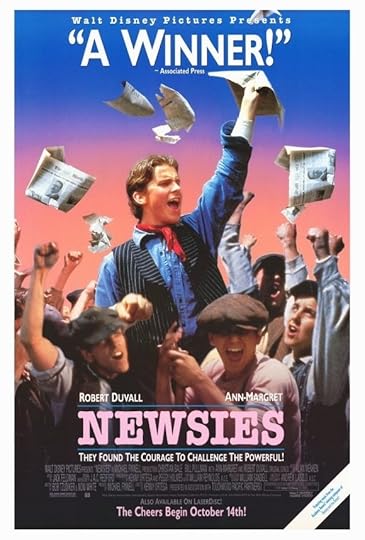
Newsies is coming to town. The roadshow version of the Broadway musical will be setting up shop in Hollywood’s Pantages Theatre this week. Although on Broadway Newsies was nominated for eight Tony Awards, the motion picture that inspired it did not do nearly so well. It was released by Walt Disney Pictures in 1992, not exactly a golden year for musicals on the big screen. As a movie, Newsies was a financial and critical flop: the only awards for which it was considered were Razzies in several categories. The producer of Newsies, Roger Corman alumnus Mike Finnell, earned a Razzie nomination for Worst Picture. And the great Alan Menken (of Aladdin and Beauty and the Beast fame) actually won a Razzie trophy for the year’s Worst Song.
Yet somehow the much maligned movie has become a cult hit, with youthful fans aplenty. It’s fun to look back on it, and see exactly who was involved. Among the singing and dancing New Yawk newsboys who go out on strike against Joseph Pulitzer’s World, the most prominent is played by none other than an eighteen-year-old Christian Bale. (He took on this role some three years after he shot to fame as an incarcerated English schoolboy in Steven Spielberg’s World War II drama, Empire of the Sun.) And Pulitzer, the newspaper publisher who’s pretty much the villain of the piece, is portrayed by one of Hollywood’s finest, Robert Duvall.
Yes, in 1899 there really was a short period in which a band of scruffy newsboys, who purchased newspapers wholesale so as to make a living hawking them on New York street corners, did strike against the World, as well as William Randolph Hearst’s Journal. Leave it to Disney to add some romance, some picturesque physical jeopardy, and some razzle-dazzle song and dance routines. But the real story shows up in my colleague James McGrath Morris’s fascinating biography of Pulitzer. In order to cut expenses, “The World raised the wholesale price of the paper from 50 cents per 100 to 60 cents. . . . Trimming a dime from a newsboy’s take might not seem like much. But when this amount was spread over the paper’s vast circulation, it could make up an entire annual deficit of nearly $1 million. Pulitzer’s managers bet that the ragtag collection of immigrant children, who often didn’t even speak the same language, could hardly put up much resistance. They were wrong.”
To crush the strike, the World recruited homeless men as scabs. They were quickly attacked by the newsies, and the bad publicity proved an embarrassment to Pulitzer and company. They offered the strikers a sop: permission to return unsold newspapers for credit. Within a week, the strike was over. Morris comments, “The World was the richest and most successful newspaper enterprise in the nation. At any time Pulitzer could have put an end to the strike by giving the boys a chance to sell the World at the same rate as they sold other papers. But he chose not to. Although he himself had once been a teenager living on the streets of New York, Pulitzer showed no mercy over a dime.”
The contradictions in Pulitzer’s life are dazzling. As an immigrant boy fleeing anti-Semitism in Hungary, he started with next to nothing. His pluck, determination, and verbal skills led him to Horatio Alger-type success. He lives on in his contributions to the journalism school at Columbia University, including the prizes that bear his name. But his was not a happy ending. Jamie Morris has a great – and maybe a movie-worthy -- tale to tell.
Biographer James McGrath Morris (whose most recent achievement is “Eye on the Struggle: Ethel Payne, the First Lady of the Black Press”) will be a featured speaker at the sixth annual conference of BIO, the Biographers International Organization, on June 5-6, 2015, in Washington, D.C. The public is most welcome!
Published on March 24, 2015 13:40
March 20, 2015
Inside the Room -- Hanging Out with the TV Mavens at UCLA Extension Writers' Program
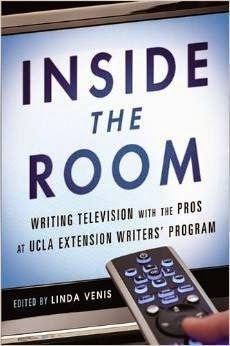
Time flies when you’re having fun. It’s been (gulp!) two decades since I started teaching screenwriting workshops through UCLA Extension’s world-famous Writers’ Program. I’ve realized over the years that, although I know a great deal about screenwriting, I don’t have a clue when it comes to writing for television. That’s why I approached with great interest a 2013 publication edited by Linda Venis, who directs UCLA Extension’s Department of the Arts. The book is Inside the Room: Writing Television with the Pros at UCLA Extension Writers’ Program. (The companion volume, which deals with writing for the big screen, is called Cut to the Chase .)
The room in the book’s title refers to the place where a writing staff meets regularly, under the direction of a showrunner, to hone ideas into workable TV episodes. The art of collaboration is one of many things that contributors to this volume have to teach. As veteran TV writer Alison Lea Bingerman warns, in a chapter titled “Launching and Sustaining a Television Writing Career,” “I’ve watched several writers’ careers go south because they always had to be the smartest kid in the room.”
While giving constructive advice, the book also introduces us to a lot of jargon that TV writers favor: the cold open, the act out, the callback, the tag, the bible, for starters. Contributors Julie Chambers and David Chambers (whose credits include The Simpsons) are particularly good at coming up with snappy aphorisms like “Think and write in screen time.” They give specific tips for how to shape a comedy spec, while others clue us in on writing dramatic specs and pilot.
Screenwriters too start off their careers by circulating spec scripts, but they do not generally base them—as TV writers do—on existing characters and premises. Joel Anderson Thompson, who’s written for House M.D., advises readers to “think of writing a spec as being allowed to throw a big party in someone else’s house while she’s out of town. You can do almost anything you want, so long as you maintain the owner’s level of cleanliness and leave her furniture in the same place.” Phil Kellard (who produced My Two Dads) clarifies: “When you write a spec of a current show, you have the distinct advantage of working with an established world and characters; you are following a template. This is where aspiring sitcom writers need to start their education.—you’re Picasso copying the great masters of figurative art; after that, you can invent Cubism or write a sitcom pilot.”
Perhaps my favorite chapter is Richard Hatem’s “The TV Year,” in which the reader imagines herself coming up with a spec idea for a pilot, refining it, pitching it, writing it, recalibrating it, selling it, casting it, shooting it, and then waiting for that golden moment when it will—or won’t—become a network series. Hatem knows enough about TV to remind us of what works: “Television is about comfort first and novelty second.” And he knows enough about human nature to warn the reader about the emotional toll that this field can exact: “You know that you will feel bad if your pilot is not produced. You will instantly put on ‘the failure coat,’ that heavy, wet garment you’ve spent so many years schlepping around in, feeling embarrassed and ashamed and angry and self-loathing in varying degrees.
(I admit it: been there, done that.)
Hatem concludes, “It’s a horrible feeling, but it is familiar. It’s a part of your life, and there’s not much you can do about it. Like rain in Portland, it’s just the cost of doing business.”
Spring quarter at UCLA Extension starts soon. For more information, phone The Writers’ Program at 310-825-9415 or visit www.writers.uclaextension.edu Online as well as on-ground course offerings make it possible for students worldwide to take advantage of The Writers’ Program’s many offerings.
Published on March 20, 2015 11:03
March 17, 2015
“In Bruges”: On St. Patrick’s Day, Here’s Blood in Your Eye
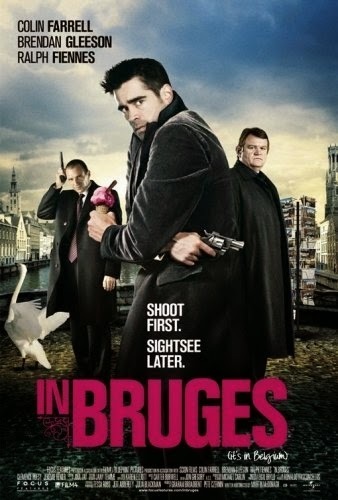 Well, no, I’m not Irish, not even a wee bit. But Ireland seems to keep cropping into my thoughts. I’ve played Irish characters in long-ago school plays. My favorite authors include James Joyce and (more recently) Colm Tóibín. One of my favorite recent vacations was a trip to the Emerald Isle.
Well, no, I’m not Irish, not even a wee bit. But Ireland seems to keep cropping into my thoughts. I’ve played Irish characters in long-ago school plays. My favorite authors include James Joyce and (more recently) Colm Tóibín. One of my favorite recent vacations was a trip to the Emerald Isle. Even my moviegoing experiences are starting to take on an Irish coloration. Years ago, I fell for a glorious little indie, Waking Ned Devine, which was full of wild Irish deviltry and a dollop of black humor. (Who can forget the late David Kelly as the naked old man on the motorcycle?) I’m also a fan of Dublin-born Jim Sheridan’s emotional take on the Irish Diaspora, In America. Last summer I was captivated by a somber drama about an Irish priest facing his own mortality. Calvary, which starred Brendan Gleeson, was written and directed by John Michael McDonagh, who has also shown he can be funny in The Guard, pairing Gleeson with Don Cheadle as a very mismatched pair of law-enforcement types. (Call it Ireland’s offbeat answer to Lethal Weapon.)
But on this St. Patrick’s Day I’m here to talk about John Michael McDonagh’s kid brother, Martin. Born in 1970, Martin McDonagh is today considered one of Ireland’s most important playwrights. I don’t know all of McDonagh’s stage work, which includes such award-winners as The Beauty Queen of Leenane and The Pillowman. I did, though, see The Lieutenant of Inishmore, which starts out like many another rural Irish gabfest, complete with fiddle music and a cozy cottage set, but ends with one of the most startling conclusions I’ve ever witnessed in a theatre. Suffice it to say that if you’ve experienced The Lieutenant of Inishmore, you won’t soon forget it.
Even while winning acclaim for his theatre work, Martin McDonagh has been obsessed with film. It’s been said that he counts among his biggest artistic influences such cinema greats as Martin Scorsese, David Lynch, Terrence Malick, and Quentin Tarantino. No surprise: he too leans toward projects that blend comedy and cruelty, and he too has a fascination with bloodshed. In 2004, McDonagh, wrote, produced, and directed Six Shooter, a morose tale that won the Academy Award for Best Live Action Short. This success led to the opportunity to make In Brugesin 2008 for Focus Features.
In Bruges is set in a Belgian city known for its pristine medieval architecture. It was filmed on location to take advantage of the local splendor, but In Bruges is not the best possible advertisement for tourism. Within the film, there is sinister activity at every turn: robbery, drug-dealing, assault, even murder. At its core is yet another odd couple, two hitmen laying low after a bungled job in England. Both are Irish-born, but as played by Colin Farrell and the inevitable Brendan Gleeson they are as different as can be. Gleeson’s Ken is stolid, philosophical, resigned. He’s charmed by Bruges. Farrell’s Ray, by contrast, is twitchy, given to emotional outbursts. He hates Bruges. In fact, at one point he concludes, “Maybe that's what hell is, the entire rest of eternity spent in fucking Bruges.”
There’s one more key character, played by Ralph Fiennes as a brutal crime boss with an unexpected moral code. Throughout we feel the sort of sardonic sentimentality of which the Irish are somehow capable.
I don’t know if In Bruges has traveled to the Middle East, but McDonagh’s stage work is surprisingly popular in Iran’s capital. I wonder how they celebrate St. Pat’s in Tehran. By donning a kelly-green chador, maybe?
Erin go Bragh!
Published on March 17, 2015 12:10
March 13, 2015
Hawking Stephen (and Other Ideas on How Movies Can Bring In Frozen Assets)

Today, as a companion piece to its new live-action Cinderella, Disney is releasing a seven-minute animated short, Frozen Fever. This is, of course, a spin-off of the 2013 megahit Frozen, using the same characters and talent to rake in more moolah from little girls—and big ones—who can’t get enough of Anna and Elsa. A recent business-section article in the Los Angeles Times (titled “Disney Works to Keep ‘Frozen’ Hot”) explains that the spunky Nordic sisters are so popular with consumers that “ retailers don’t want to let them go.” Today you can buy Frozen-themed dolls, dress-up wigs, iPhone cases, and adult-sized lingerie. There are also Frozen T-shirts, dental floss, notebooks, and (for all I know) frozen peas. The challenge for Disney is to figure out in advance the point when demand for all this Frozen merchandise starts melting away.
Disney has always been great at dreaming up marketing tie-ins: remember the Davy Crockett Cap? And the aggressive merchandizing of movie megahits has been with us at least since Star Wars. But even in the late 1960s, studios were trying to exploit their hot pictures in the commercial marketplace. In 1968 the new Century City Shopping Center (located on what once had been the back lot at Twentieth Century-Fox) held a week-long promotional event celebrating Bonnie and Clyde. Thousands of potential shoppers turned out for a Bonnie Parker and Clyde Barrow look-alike contest, a Tommy gun display, and storefronts decorated with simulated bullet holes. I’m sure many Bonnie berets and mid-calf skirts were sold. It’s surprising that another big hit of the era, The Graduate, never attempted to capitalize on Mrs. Robinson’s sexy animal-print jackets, skirts, and unmentionables. But the makers of Camelot launched an ambitious loungewear line featuring romantic Queen Guenevere peignoir sets, a Lancelot “mini jumpsuit,” and Court Jester two-toned culottes. Too bad Camelot was an expensive flop—and no one bought the clothes.
Cut to 2014. No, this wasn’t a huge year for runaway prestige hits. The makers of comic-book movies featuring Spider-Man, the X-Men, and others of their ilk know all about selling to their built-in audiences. But the films that made it to the top of the heap on Oscar night have been a modest bunch. Most could definitely use some extra revenue. As a Roger Corman veteran, I’m always alert to unexpected financial opportunities, and so I offer up (tongue very much in cheek) some free marketing suggestions for the year’s Best Picture nominees. For the Stephen Hawking biopic, The Theory of Everything, the obvious tie-in is with a medical supply house. But there’s also an early bit of romantic business involving Tide detergent. Sounds like a marketing opportunity to me. Boyhood? Cameras make sense, given the lead character’s choice of vocation. And how about hair clippers? Selma is a tough one—but possibly (given the role of the Edmund Pettus Bridge in the film) dental bridges? The Imitation Game, all about code-cracking, could be linked to decoder rings for the kiddies. But since the material is very adult, how about a brand of apples? (Those who remember how Alan Turing died will surely see the connection.) Whiplash has a natural tie-in to drum kits, but also to band-aids (to protect bleeding fingers). The Grand Budapest Hotel is easy: travel packages and a patisserie that delivers its goodies in pretty pink boxes. Birdman seems ripe for an action figure, and how about the brand-name tighty-whities worn by Michael Keaton in Times Square? And then there’s the year’s box-office champ, American Sniper. An opportunity for a branded shooting range franchise?
OK, I’ll stop now.
Published on March 13, 2015 11:22
March 10, 2015
Fly Me to the Moon: Harrison Ford and the Santa Monica Airport
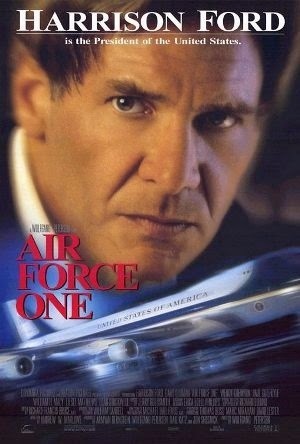
Today’s big aviation news concerns a small solar-powered Swiss airplane that has now successfully completed the first leg of a round-the-world flight. Last Friday, though, the scuttlebutt in SoCal was all about actor Harrison Ford, who’d been injured while crash-landing his vintage aircraft on a public golf course. Ford had taken off on Thursday from Santa Monica Airport, not far from my home. When his tiny World War II-era Ryan PT-22 Recruit developed engine trouble soon into the flight, he tried to head back to the airport, then realized he wouldn’t make it. A veteran pilot, he was clear-headed enough to pick Venice’s Penmar Golf Course for his emergency landing site. In so doing, he won the praise of flying professionals, one of whom was quoted as saying, ““I think he did the best thing he could’ve done, and he did the thing I’ve feared having to do every time I depart from there in a single-engine airplane.”
Ford’s grace under pressure is certainly something to admire. His mishap, though, added more fuel to the debate over the future of Santa Monica Airport, which caters to the needs of private pilots, movie stars, and the occasional U.S. president. The airport is located in a densely populated urban area. Since 1982, there have been 42 crashes in the vicinity. Some planes have gone down at busy intersections, and even in local backyards. Fortunately, no one on the ground has been killed or seriously injured, but it’s understandable that a lot of folks want to shut down the airport for good.
I won’t get into that contentious debate, which has riled Santa Monica residents for quite a while. Suffice it to say that air travel has not always been kind to Hollywood’s rich and famous. I’m sure I’m leaving out someone, but I’ve quickly compiled quite a long list of celebrity actors and singers whose lives have ended in the crashes of small planes. Way back in 1935 there was actor-humorist Will Rogers, a great believer in the future of aviation, who died near Point Barrow, Alaska, while jaunting with flyer Wiley Post. In 1942, the wonderful screwball comedienne Carole Lombard (who had recently wed Clark Gable) died in Nevada while flying home from a war bond rally. Two years later, the small plane carrying band leader Glenn Miller was lost over the English Channel: he was heading for Paris to entertain the Allied troops.
Country singer Patsy Cline died in Tennessee in her manager’s small plane in 1963. Folksinger and actor John Denver, himself an enthusiastic amateur pilot and the composer of “Leavin’ on a Jet Plane,” died in Monterey Bay in the cockpit of an experimental aircraft in 1997. In 2001, pop singer Aaliyah and eight others were killed in the Bahamas after shooting a music video. (It turned out their pilot was unlicensed, and had traces of both alcohol and cocaine in his system.) But of course the most remembered crash of all took place on February 3, 1959, when Ritchie Valens, Buddy Holly, and the Big Bopper went down over Iowa after a concert appearance. The event was immortalized in Don McLean’s “American Pie” as “The Day the Music Died.”
Fortunately for all of us, Kirk Douglas survived a serious helicopter crash in 1991. And fortunately Han Solo managed to walk away from the wreckage of his plane last week. But he’ll probably continue to fly, becomes he loves the “combination of freedom and responsibility” he gets from piloting his own craft. As he told Playboyin 2002, “It’s anonymity. I’m not Harrison Ford. I’m November II28 Sierra.”
Published on March 10, 2015 14:02
March 6, 2015
Blades of Glory: Ice Hockey Has Its Day
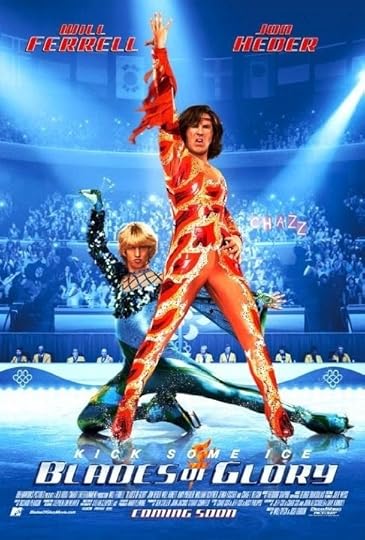
I hear it’s been snowing in Kentucky. And Atlanta. And of course Boston. In Minnesota, though, not so much. The prediction for today in Bloomington, Minnesota is a toasty 37 degrees Fahrenheit, which means local kids are wearing Bermuda shorts and riding around in convertibles with the top down. Which is ironic, because Minnesota is the home of U.S. ice hockey, a sport that began on frozen ponds. But it’s since moved indoors to fancy rinks, like the one where the Minnesota State High School Hockey championship games are now being played. Even from SoCal, I can feel the excitement building.
Not long ago, I knew (and cared) little about hockey. That was before I read my colleague John Rosengren’s Blades of Glory. No, it has nothing to do with the silly 2007 figure-skating movie starring Will Ferrell. John’s book came first, back in 2004. Its subtitle is The True Story of a Young Team Bred to Win, and it chronicles a year in the life of Bloomington’s Jefferson High School Jaguars, led by the winningest active coach in Minnesota high school history. Suspense builds as the team works its way toward the state high school tournament. If you don’t think that a high school championship is a big deal, you don’t know Minnesota. Even star coach Herb Brooks, who led the U.S. national team to the “Miracle on Ice” victory over the U.S.S.R. at the 1980 Winter Olympics, has said that winning this high school tournament was his biggest career thrill.
The Miracle on Ice turned into a popular 1981 movie, starring Karl Malden as Brooks and my old pal Andrew Stevens as team hero Mike Eruzione. But the film that apparently has meant the most to young Minnesotans is The Mighty Ducks, the story of a youth hockey team that made good. John’s book taught me that a viewing of The Mighty Ducks is a pre-game ritual for many hockey families. He also mentions in passing one young skater, Dougie Stansberry, who’d appeared as an extra and a skating double in The Mighty Ducks and its sequels. That was his last brush with fame. As a senior, he was abruptly cut from the Jefferson team, and he never got over his disappointment. He graduated and got a job he seemed to like. Then one day he hanged himself.
On the 2000-2001 varsity team covered by Rosengren, nothing so tragic happens. Still, there’s plenty of drama. There are players who rise to the occasion, and others who fall by the wayside. There are injuries and recuperations. There are players dealing with family woes and fighting their own personal demons. There’s a coach—much loved, much feared, sometimes resented—who desperately wants to finish out his career on a high note. There’s a girls’ team that rises to unexpected heights. And there’s the shadow of bigger social problems, including performance-enhancing drugs and a system that encourages schools to bag one another’s best players.
Sounds like a movie to me. Or a TV series on the order of Friday Night Lights. Hollywood has indeed come calling. John’s book was first optioned by actor/producer Milo Ventimiglia, who hoped to go the TV route. The current option-holders are two Canadians who’ve commissioned a screenplay, but seem stalled in raising financing for an independent feature.
John’s introduction to Blades of Glory begins with a line that would sound great in voice-over: “The average teenage boy thinks about sex once every seven seconds; in Minnesota, he thinks about hockey the other six.” Will we ever hear this read by an actor? Personally, I can’t wait.
John Rosengren and I will both be featured speakers at this year's conference of the American Society of Journalists and Authors from April 30 to May 2 in New York City. The public is cordially invited
Published on March 06, 2015 11:27
March 3, 2015
Honoring Leonard Nimoy, Who Lived Long and Prospered
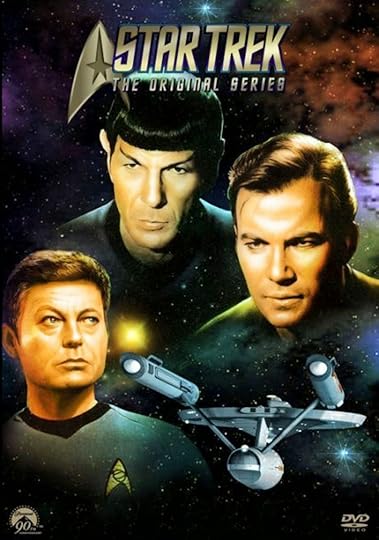
Like everyone in the world—no, make that everyone in the universe—I’m going to miss Leonard Nimoy. I can’t pretend to be a Star Trek expert, but even those who haven’t seen a single episode know something about the highly logical half-Vulcan with the slanted eyebrows and the pointy ears. What appeals to me about Leonard Nimoy is how he made this role his own, then used it as a stepping-stone to all the other creative things he wanted to do. He took on many roles, both fanciful parts and highly serious ones, playing a pompous self-help guru in the 1978 version of Invasion of the Body Snatchers and a survivor of Auschwitz in a 1991 TV drama called Never Forget. He also turned to the stage, touring as Vincent Van Gogh in a one-man play.
His celebrity led him in some curious directions. He published poetry. He became a recording star via an album titled Mr. Spock’s Music from Outer Space. He launched comic books, provided voiceovers for videogames, got involved with children’s educational television, and appeared on The Simpsons. He also made the leap into the director’s chair, helming several of the Star Trek movies as well as Three Men and a Baby.
Most seriously, he pursued his lifelong interest in art photography. His work, which hung in galleries and museums, included a controversial series called Shekhina, built around images of nude and sensually draped women, combined with Jewish ritual objects. To Nimoy these photos were intended to suggest the traditionally feminine aspects of Jewish spirituality. His commitment to the religion of his forefathers was never in question. As everyone knows by now, his famous Vulcan salute was respectfully borrowed from the fingers-apart gesture made by the kohanim (or Jewish priests) since ancient times, while blessing their fellow congregants. In his own life, Nimoy made it a point to include among his charitable efforts a deep commitment to Jewish causes, including his home synagogue, Temple Israel of Hollywood.
In recent years I’ve loved reading about Leonard Nimoy because he was happily married (since 1989) to a long-ago friend of mine. I met Susan Bay when I was a high school kid without a driver’s license, and she was a grown-up college girl. We were both active in drama at a local community center. When The Wizard of Oz was being staged, Susan was cast as Dorothy. As for me, I was lucky to be invited to play a dual role, the head Munchkin as well as the Captain of the Flying Monkeys. After rehearsals and performances, Susan would drive me home; she’d tell me about her college acting courses and advise me to read Stanislavski. (Sorry, Susan—I still haven’t followed through on that.) Afterwards we lost touch, but I remember being excited to see her featured in a TV drama.
Over the years, Susan has undertaken the occasional acting role and gotten involved with progressive social causes. Since her marriage to Nimoy, the two have worked together on numerous projects. He produced and she directed a one-woman play about Shakespeare’s wife, Anne Hathaway. They’ve donated major sums to L.A.’s Museum of Contemporary Art, and were important forces behind the spectacular recent renovation of the Griffith Park Observatory, which now houses the Leonard Nimoy Event Horizon Theater. Once I attended a rather esoteric concert at Temple Israel, and found both of them in the lobby, promoting ticket and CD sales. Susan and I shared a few memories, and her spouse was gracious to me too. Which, after all, was only logical.
 The Wizard of Oz: that's Susan Bay on the right, and me as a Flying Monkey crouching at left.
The Wizard of Oz: that's Susan Bay on the right, and me as a Flying Monkey crouching at left.
Published on March 03, 2015 12:17
Beverly in Movieland
I write twice weekly, covering topics relating to movies, moviemaking, and growing up Hollywood-adjacent. I believe that movies can change lives, and I'm always happy to hear from readers who'd like t
I write twice weekly, covering topics relating to movies, moviemaking, and growing up Hollywood-adjacent. I believe that movies can change lives, and I'm always happy to hear from readers who'd like to discuss that point.
...more
- Beverly Gray's profile
- 10 followers



